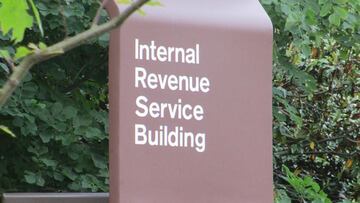Tax Return 2021: how to calculate what you pay with income brackets and rates
Depending on your annual income you will fall into one of the seven federal income brackets. However you don’t pay that rate on all of your income.

The seven federal income brackets 10%, 12%, 22%, 24%, 32%, 35% and 37% were set after the 2017 Tax Cuts and Jobs Act. Your annual adjusted gross income (AGI) and filing status determine how much you will have to pay in taxes.
However, its a good idea to keep track of all your expenses, they can make all the difference when tax season rolls around. By using deductions you can reduce your tax burden to slip into a lower bracket.
How the tax brackets work
As you earn more money you pay a larger share of your income in taxes. But you don’t pay the rate of the bracket you fall into on the whole of your income. You progressively pay a higher rate for each part of your income that exceeds the previous bracket.
A look at how it works. For example, a person who earned $42,000 in 2020 would fall into the 22% tax bracket, their marginal rate. If that person filed their tax return with no deductions, they would owe $5,030 in taxes for the year, not $9,240.
It breaks down like this. That individual would pay an effective rate of 10% on the first $9,875, then 12% on earnings from $9,876 to $40,125, and then 22% on the rest. For a full list of the tax brackets and what you would pay for each scroll down.
-
What to do if "Your tax return is still being processed" message appears
-
Tax Return 2021: how long does it take to get refund?
-
How to claim a stimulus check from the IRS on a 2020 tax return
-
What is the Child Tax Credit and how does it affect tax filing?
How to reduce your tax rate
The two most common ways to reduce what you owe to Uncle Sam are through tax credits and deductions.
Tax credits: These reduce the amount of tax that you owe but don’t get you into a lower tax bracket. They come in two types refundable and non-refundable. Refundable credits you get the money back from the government even if you paid less in taxes than the credit is worth.
Tax deductions: These reduce how much of your income is subject to taxes. These can be work related, home and medical expenses, etc.
To get a full list go to the IRS webpage for credits and deductions for individuals.
2020 federal income tax brackets
Related stories
For taxes due 15 April 2021, or 15 October 2021 with an extension.
|
Tax rate
|
Taxable income bracket
|
Tax owed
|
|
10%
|
$0 to $9,875
|
10% of taxable income
|
|
12%
|
$9,876 to $40,125
|
$987.50 plus 12% of the amount over $9,875
|
|
22%
|
$40,126 to $85,525
|
$4,617.50 plus 22% of the amount over $40,125
|
|
24%
|
$85,526 to $163,300
|
$14,605.50 plus 24% of the amount over $85,525
|
|
32%
|
$163,301 to $207,350
|
$33,271.50 plus 32% of the amount over $163,300
|
|
35%
|
$207,351 to $518,400
|
$47,367.50 plus 35% of the amount over $207,350
|
|
37%
|
$518,401 or more
|
$156,235 plus 37% of the amount over $518,400
|
Single filer
|
Tax rate
|
Taxable income bracket
|
Tax owed
|
|
10%
|
$0 to $19,750
|
10% of taxable income
|
|
12%
|
$19,751 to $80,250
|
$1,975 plus 12% of the amount over $19,750
|
|
22%
|
$80,251 to $171,050
|
$9,235 plus 22% of the amount over $80,250
|
|
24%
|
$171,051 to $326,600
|
$29,211 plus 24% of the amount over $171,050
|
|
32%
|
$326,601 to $414,700
|
$66,543 plus 32% of the amount over $326,600
|
|
35%
|
$414,701 to $622,050
|
$94,735 plus 35% of the amount over $414,700
|
|
37%
|
$622,051 or more
|
$167,307.50 plus 37% of the amount over $622,050
|
Married, filing jointly
|
Tax rate
|
Taxable income bracket
|
Tax owed
|
|
10%
|
$0 to $9,875
|
10% of taxable income
|
|
12%
|
$9,876 to $40,125
|
$987.50 plus 12% of the amount over $9,875
|
|
22%
|
$40,126 to $85,525
|
$4,617.50 plus 22% of the amount over $40,125
|
|
24%
|
$85,526 to $163,300
|
$14,605.50 plus 24% of the amount over $85,525
|
|
32%
|
$163,301 to $207,350
|
$33,271.50 plus 32% of the amount over $163,300
|
|
35%
|
$207,351 to $311,025
|
$47,367.50 plus 35% of the amount over $207,350
|
|
37%
|
$311,026 or more
|
$83,653.75 plus 37% of the amount over $311,025
|
Married, filing separately
|
Tax rate
|
Taxable income bracket
|
Tax owed
|
|
10%
|
$0 to $14,100
|
10% of taxable income
|
|
12%
|
$14,101 to $53,700
|
$1,420 plus 12% of the amount over $14,200
|
|
22%
|
$53,701 to $85,500
|
$6,220 plus 22% of the amount over $54,200
|
|
24%
|
$85,501 to $163,300
|
$13,293 plus 24% of the amount over $86,350
|
|
32%
|
$163,301 to $207,350
|
$32,145 plus 32% of the amount over $164,900
|
|
35%
|
$207,351 to $518,400
|
$46,385 plus 35% of the amount over $209,400
|
|
37%
|
$518,401 or more
|
$156,355 plus 37% of the amount over $523,600
|
Head of Household

